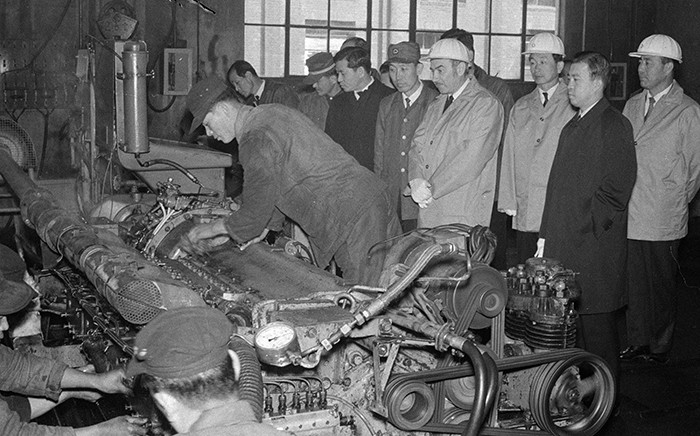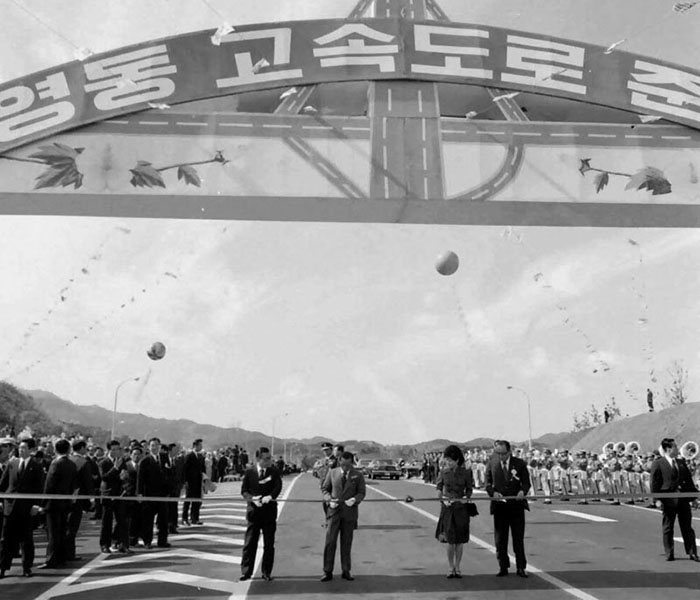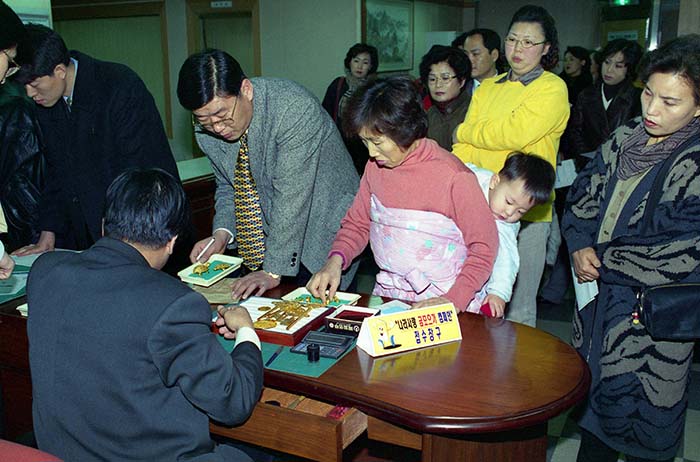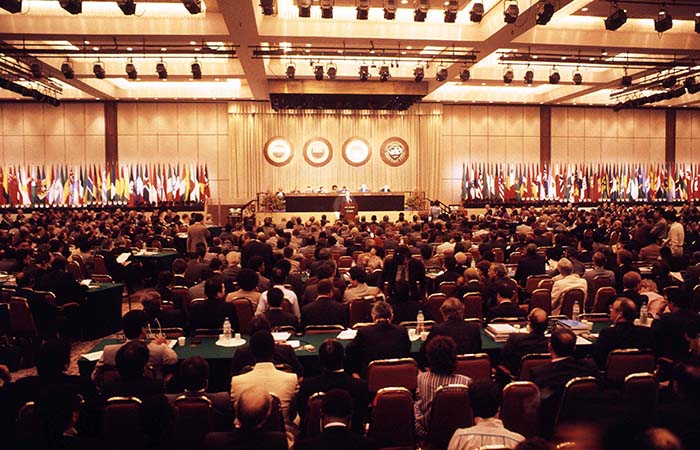
In this picture from 1970, officials from the IBRD visit a factory where train engines are being built. On Aug. 23, the National Archives of Korea releases a collection of videos, photos and official documents that trace the ‘Miracle on the Han,’ Korea’s rapid pace of economic development after the Korean War (1950-1953).
At the end of the Korean War (1953-55), Korea was left in ruins. Most industrial facilities were reduced to rubble, and any resources or capital were in short supply. In spite of this, Korea was able to rebuild its foundation from the ground up, and in 30 short years, starting from the 1960s, revived the economy and achieved what is known today as the “Miracle on the Han.”
It’s important to note that Korea could not have achieved this miracle without the impetus provided by two major organizations: the International Monetary Fund (IMF) and the International Bank for Reconstruction and Development (IBRD).
Korea first became a member of the IMF and IBRD on Aug. 26, 1955. Over the course of 30 years, beginning in the 1960s, Korea received some USD 15.6 billion in loans from these financial institutions. This money was used to fund a number of major national projects designed to create footholds in the global economy for different sectors of Korean manufacturing. These included the construction of an all-weather agricultural water management facility (1969), railway development projects (1970), construction of the Yeongdong and Donghae expressways (1973) and the construction of a multipurpose dam in Chungju, Chungcheongbuk-do Province (1978).

Starting in the 1960s, Korea receives loans from the IMF and the IBRD and uses the money to fund a number of economy-boosting national projects. Construction of the Yeongdong and Donghae expressways (pictured) was one such project, completed in 1975.
Korea was hit by stormy weather once again, however, when the Asian financial crisis took hold of markets in 1997.
At this juncture, Korea reached out to the IMF again with a request for USD 21 billion, putting forth an outline of policies that the Korean government would implement over the next three years to address the causes of its financial difficulties. So began the road to economic recovery. The country spent the next several years restructuring corporations, and the citizens played an active part by participating in the nationwide collection of gold. Thanks to such concerted efforts, Korea was able to repay its debts well in advance of the 2004 deadline, and removed itself completely from IMF supervision by 2001. For the second time, a miracle on the Hangang River was realized.
Having once been the recipient of developmental aid, Korea is now an aid donor itself, sharing its experiences with developing countries all around the world.

In order to overcome the 1997 Asian financial crisis, the Korean government requests a loan from the IMF and asks its citizens to partake in a nation-wide recovery program. In 1998, at the height of the crisis (pictured), long lines form at district offices where people gathered to contribute their donations of gold.
To spotlight the role played by the IMF and the IBRD in the history of the “Miracle on the Han,” the National Archives of Korea released an online collection of videos, photographs, documents and other records on Aug. 23.
The archive features original paperwork that was filed with the IMF and IBRD when the Korean government first took out loans in the 1960s, as well as photos of major events like the 40th IMF-IBRD annual meeting that was held in Seoul in 1985. Records that trace the 1997 Asian financial crisis, and the recovery that followed, are also in the database.
The collection can be found at the link below:
www.archives.go.kr
By Lee Hana
Korea.net Staff Writer
Photos: National Archives of Korea
hlee10@korea.kr

The 40th IMF-IBRD annual meeting is held in Seoul in 1985, as the organizers deem the ‘Miracle on the Han’ to be an exemplary case of aid-assisted economic development.






![[102nd March First Independence Movement Day] American journalist’s Seoul home to be opened to public](https://gangnam.com/file/2021/03/usr_1614255694426-218x150.jpg)
















